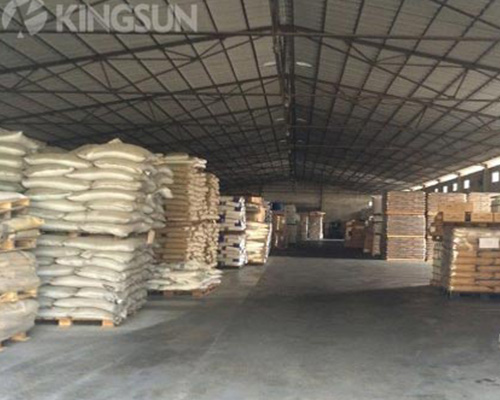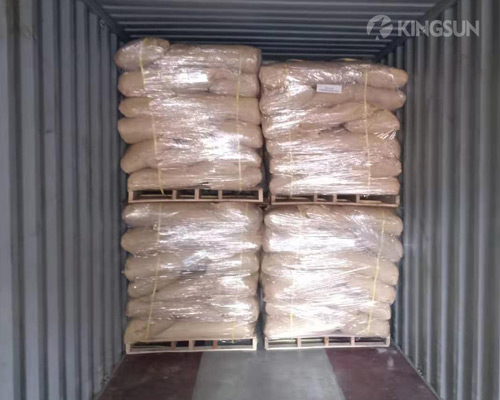Dispersant MF (chemical name is methylnaphthalene sulfonic acid formaldehyde condensate), also known as dispersant MF. It is an anionic surfactant made by sulfonating a specific fraction in coal tar to obtain methylnaphthalene sulfonic acid, and then condensing it with formaldehyde. It is an important chemical with wide applications in many industrial fields.
It is brown powder in appearance, is easily soluble in water, is resistant to acid, alkali, and hard water, has good diffusivity and excellent thermal stability, and can maintain its performance stability under high temperature conditions, and is even more resistant to high temperatures than dispersing agent NNO. Even in hard water or an environment containing inorganic salts, the performance of dispersant MF will not be significantly affected.
Item | Dispersing Agent MF |
Appearence | Dark Brown Powder |
Dispersion Force | ≥95% |
PH (1% aq. Solution) | 7-9 |
Na2SO4 | ≤5% |
Water | ≤8% |
Insoluble Impuries Content | ≤0.05% |
Ca+Mg Content | ≤4000ppm |
Applications of Dispersant MF
- Construction industry. Dispersing agent MF can be used as an early strength water reducer for concrete, which can shorten the construction period, save cement, save water, and increase cement strength.
- Dye industry. Dispersant MF is mainly used as a dispersant and filler for vat dyes and disperse dyes. It can effectively improve the dispersibility and coloring uniformity of dyes during the grinding process, making the dyes bright and bright in color. It is also used in processes such as pad dyeing of vat dye suspensions, color-stabilizing acid dyeing and dispersion, and soluble vat dye dyeing.
- Leather industry. This product can be used as an auxiliary tanning agent to help improve the quality and performance of leather.
- Rubber industry. Used as a stabilizer for latex, MF chemical can enhance the stability and processing performance of rubber.
- Other fields. It can also be used in the papermaking industry to control pulp rot, reduce two-sidedness, and improve the retention rate of fillers or fine fibers. In addition, dispersant MF is also used in wettable pesticides, electroplating additives, water-soluble coatings, pigment dispersion, water treatment, carbon black dispersion, etc.
-
Performance Characteristics
- Main Differences between dispersant MF and NNO
- Good stability. It is resistant to acid, alkali, hard water and inorganic salts. It can maintain stable performance in various complex chemical environments and is not easy to fail due to chemical reactions. It also has high thermal stability and can still maintain good dispersion effect under high temperature conditions. It is suitable for some production processes that need to be carried out under high temperature conditions.
- Strong compatibility. It can be used with anionic and non-ionic surfactants at the same time, and can synergize with other additives to improve the performance and effect of the product, but it cannot be mixed with cationic dyes or surfactants.
- Excellent dispersibility. It can evenly disperse solid particles in liquid to prevent particle agglomeration and precipitation. It is particularly effective in dispersing disperse dyes, vat dyes, etc. In the printing and dyeing industry, it can make the dye color bright, increase color strength, and color uniform. It is suitable for processes such as pad dyeing of vat dye suspensions, color-stabilizing acid dyeing and dispersion, and dyeing of soluble vat dyes.
- Protective colloid properties. It can form a protective film in the dispersed system to prevent the dispersed particles from reaggregating and maintain the stability of the dispersed system. It can protect some particles that are prone to oxidation, hydrolysis and other reactions and extend their service life.
- It has selective affinity for fibers. It has affinity for protein and polyamide fibers, but no affinity for cotton, linen and other fibers.
- It has no permeability and foaming. It will not produce permeation and foaming during use, which is advantageous in some application scenarios with strict requirements on permeability and foaming.
- Adjustability. It can be adjusted and improved according to different application requirements, has certain substitutability, and can meet the needs of different industries and application scenarios.
- Environmental protection: Dispersant MF is a non-toxic chemical that is harmless to the human body and the environment.
(1) Dispersibility
Dispersant MF has better dispersibility than dispersant NNO. It can improve the dispersion of pigments or dyes more effectively, especially in the field of high-demand dyes and pigments, where dispersant MF is more widely used.
Although dispersant NNO also has good dispersibility, it may not be as effective as dispersant MF in some application scenarios.
(2) Stability
Dispersant MF shows better stability in different media and temperatures, which enables it to be used under a wider range of production and application conditions.
Dispersant NNO also has good stability, but dispersant MF may be more stable in comparison.
(3) Compatibility
They have different compatibilities with different pigments and dyes. In practical applications, it is necessary to select a suitable dispersant according to specific application requirements.
Why Choose Kingsun Company
- As a leading manufacturer and supplier in China, Kingsun has more than 15+ years of experience in chemicals industry.
- All of our products have passed quality inspection and certifications, such as ISO, SGS, BV,etc.
- We can provide high-quality product, excellent services and competitive factory price for all the customers.
- Kingsun products has been exported to more than 30+ countries, including Malaysia, Vietnam, Thailand, Indonesia, Singapore, Israel, Qatar, Bahrain, UAE, Saudi Arabia, Kuwait, Lebanon, Turkey, Russia, Mexico, Bangladesh, Pakistan, etc.





